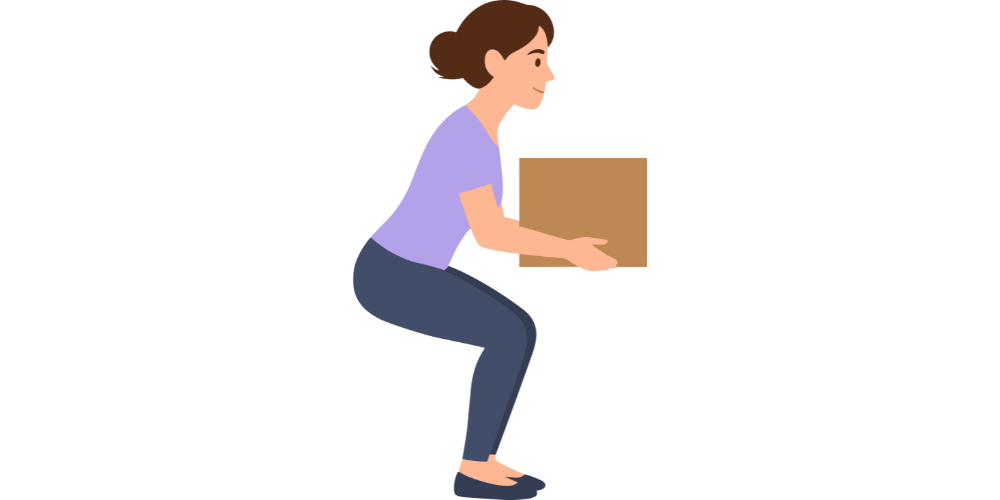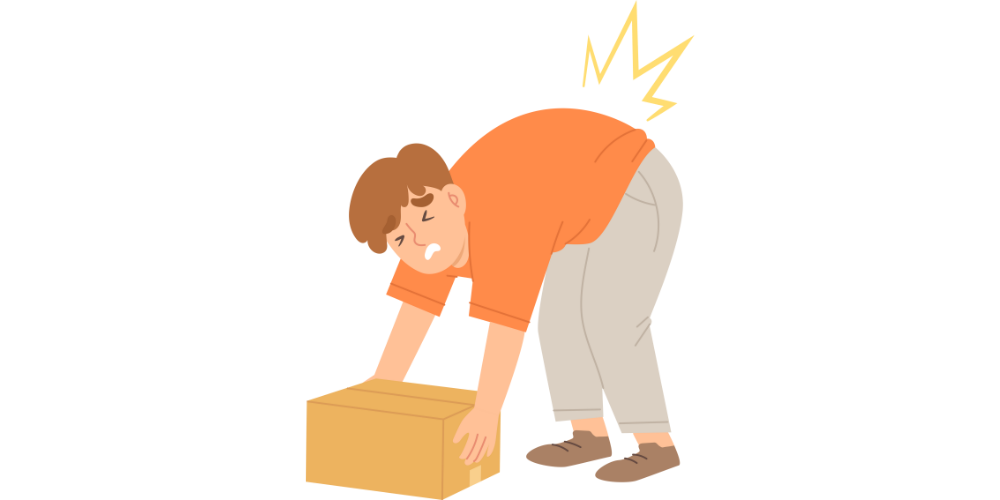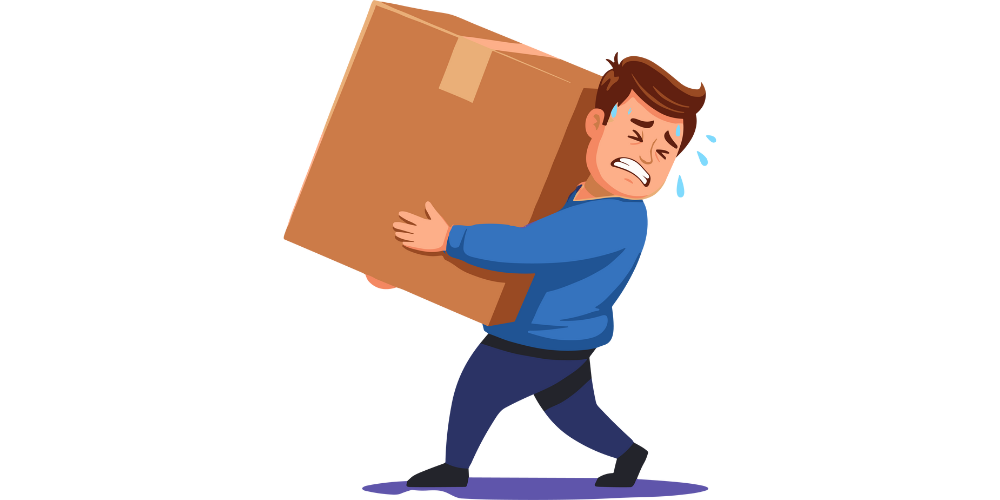Lifting Right at Work: A Safer Way to Move on the Job
Bay City Health | Experts in Allied Health & Workplace Injury Prevention
From restocking shelves and loading customer purchases to shifting deliveries and rearranging displays, manual handling is unavoidable. In workplaces such as trade sites, warehouses and retail stores, lifting can be performed dozens — even hundreds — of times per shift. Unfortunately, when done incorrectly, lifting becomes one of the most common causes of workplace injury — and one of the most preventable.
Common Faults in Lifting Technique
Faulty lifting habits often stem from rushing, poor load estimation, and repetitive movement patterns. Many people bend and lift through their spine instead of using their hips and legs for power. Others twist their torso while carrying items, hold loads away from their body, reach above shoulder height for heavy objects, or lift awkwardly due to space constraints. Quick, jerky movements or failing to use help or mechanical aids when needed also increase risk.
A frequent but overlooked issue is attempting to keep the back completely upright during lifting. This forces the knees to drive forward over the toes, dramatically increasing stress through the patella and associated knee structures.
Over time, these repeated micro-errors cause fatigue, muscular strain, joint overload, and preventable injuries.
“Lift with a Straight Back” — What It Really Means
We’ve all heard the advice to “lift with a straight back,” but it’s often misunderstood. Many interpret it as keeping the spine completely upright — which actually causes rounding and strain through the thoracic and lumbar regions, and limits the hips’ contribution to the lift.
A “straight back” actually means a neutral spine. During an optimal lift, the body inclines forward naturally (around a 45° angle) while maintaining spinal neutrality. This position allows the hips and glutes to drive the movement, keeping the load close to the body and minimizing stress through the spine.
When someone tries to lift while keeping their back completely upright, their knees must shift forward over the toes to reach the load. This creates a significant anterior (forward) load through the knees, placing excessive stress on the patella and surrounding structures — often leading to knee irritation, pain, or overload over time.
When workers learn to hinge at the hips, brace their core, and lift with a neutral (not vertical) spine, they move more efficiently, protect both their spine and knees, and reduce cumulative strain throughout the body.
Why Smart Lifting Matters
Poor lifting technique isn’t just “bad form” — it’s a genuine occupational hazard that can have both short- and long-term consequences. Each time you lift, carry, push, or pull a load, your body is under mechanical stress. If that stress isn’t distributed properly, it can overload vulnerable structures such as the spine, knees, or shoulders — leading to strain, inflammation, or more serious injury.
Prevention is Better Than a Cure
When employees learn safe, efficient lifting techniques and have their workstations ergonomically optimised, they’re far less likely to develop strain, fatigue, and recurring musculoskeletal issues.
The benefits are twofold: employees experience greater comfort, confidence, and long-term physical wellbeing, while businesses see fewer injury claims, reduced sick leave, lower treatment costs, and improved productivity. Investing in correct movement education early leads to stronger outcomes for both individuals and organisations.
Common Lifting-Related Injuries
Low Back Strain or Disc Injury
How it happens: Bending or twisting while lifting can overstretch muscles or cause disc bulging or herniation.
Main symptoms: Tightness, sharp pain, restricted movement, or nerve pain radiating down the leg.
Shoulder Tendinopathy or Rotator Cuff Injury
How it occurs: Overhead lifting, carrying loads away from the body, or sudden jerking can inflame or tear shoulder tendons
Main symptoms: Pain when lifting or reaching, weakness, and night discomfort.
Knee and Hip Strain
How it occurs: Repeated squatting or “catching” loads with the knees can strain ligaments or joints.
Main symptoms: Aching, swelling, or stiffness, which can progress to chronic pain over time.
Wrist, Elbow or Hand Injuries
How it occurs: Poor grip or awkward loads can lead to repetitive strain injuries (RSIs) or tendon inflammation.
Main symptoms: Pain, tenderness, and reduced grip strength during repetitive tasks.
Fatigue and Compensatory Injuries
How it occurs: Improper lifting causes certain muscles to overwork while others weaken.
Main symptoms: General fatigue, poor posture, and overuse pain in the neck, shoulders, or back.
Safe Lifting Techniques: The Core Principles
Plan Before You Lift
Assess the weight, test it first, and get help if it’s too heavy or awkward.
Plan your route and clear any obstacles.
Stand Close to the Load
Keep the object near your centre of gravity with your knees close to its sides.
Set a Stable Foot Position
Feet shoulder-width apart with toes slightly turned out, knees bent, hips mobile.
Bend at the Hips and Knees, Not the Back
Maintain a neutral spine to prevent over-arching or rounding through your back.
Bum out (be like a Gorilla)
Push your hips back and down to help engage the strongest muscles in the body - the glutes!
Don’t use your back to generate power (refer to above sentence)
Grip the Load Firmly
Use a full-hand grip (not just fingers).
Ensure a secure hold before lifting.
Lift Smoothly and Avoid Twisting
Engage your core, lift steadily, and keep the load close.
Turn your whole body with your feet — not your torso.
Put the Load Down Carefully
Reverse the lifting steps: squat, keep the back neutral, and the load close.
Practical Tools to Prevent Injury
Use lifting aids — trolleys, pallet jacks, or forklifts.
Store heavy items at waist height.
Rotate tasks to reduce fatigue.
Include warm-up routines before shifts.
How Osteopaths Can Help
Osteopaths are uniquely positioned to assess lifting technique and workplace ergonomics. We view the body as an integrated system — analysing how load transfers through the kinetic chain, identifying compensations, and understanding how anatomy, past injuries, and job demands influence movement.
This allows us to provide tailored, practical feedback that goes beyond generic “manual handling” advice.
At Bay City Health, our Osteopaths:
Conduct on-site manual handling workshops
Provide job-specific movement training
Perform ergonomic assessments of work and storage areas
Design injury prevention programs
Support return-to-work and injury rehabilitation
Need Help with Workplace Safety?
Whether you manage a warehouse, retail store, or trade centre, our team can support your staff’s health and safety.
Contact Bay City Health today for tailored workplace injury prevention and manual handling education.




